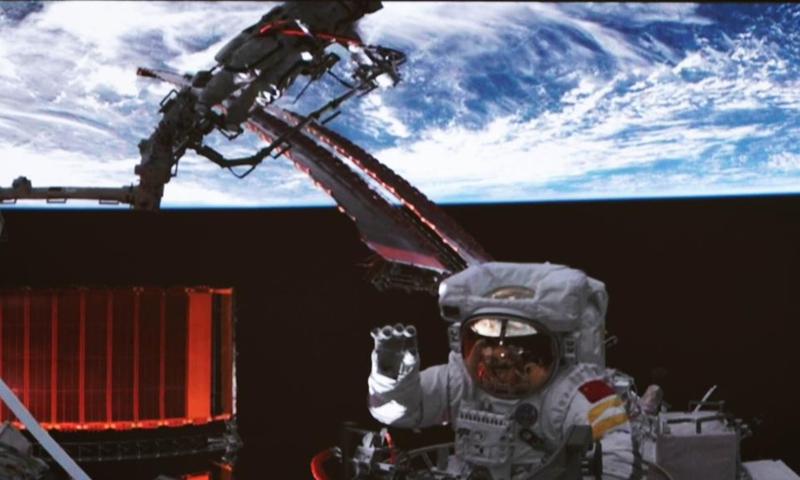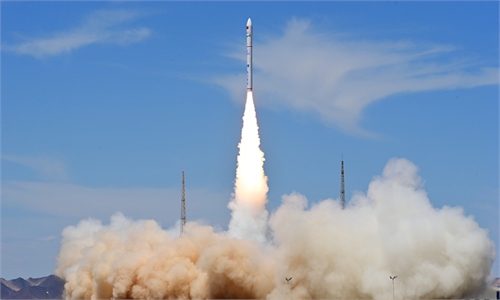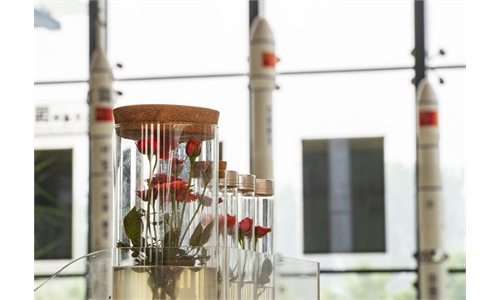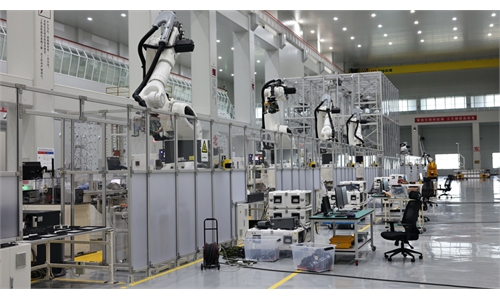Channel to apply for space science and application projects on China's Space Station opens

This screen image captured at Beijing Aerospace Control Center on July 20, 2023 shows Shenzhou-16 astronaut Zhu Yangzhu waving after exiting the Wentian lab module. The Shenzhou-16 crew members on board China's orbiting space station completed their first spacewalk at 9:40 p.m. (Beijing Time) on Thursday, according to the China Manned Space Agency.(Photo: Xinhua)
The channel to apply for space science and application projects on China Space Station officially opened on Friday. Gui Haichao, China's first civilian taikonaut and the first payload expert into space, invited more scientists and experts to conduct research on China's manned spaceflight Tiangong Space Station.
To promote the overall development of China's space science, space application, and space technology, in mid-June, the China Manned Space Engineering Office released guidelines on space station applications and the development of engineering space science projects, openly soliciting space science and application projects from the general public under four categories - space science and human body research, microgravity physical science, space astronomy and earth science as well as new space technologies and applications.
The application channel is open from July 20 to August 10, and detailed requirements have also been released on the office's website.
China's Space Station has unique advantages, facilities and capabilities for conducting large-scale space science research. The scientific experiment cabinet, technical test cabinet and support system equipped inside the space station, as well as the exposure experiment platform, could support scientific research, technical tests and applications in many fields, the office said.
Shenzhou-16 crew members Jing Haipeng, Zhu Yangzhu and Gui Haichao successfully completed all assigned tasks and safely returned to the space research module with the support of a robotic arm after about eight hours of their first extravehicular activity (EVA), the China Manned Space Engineering Office said on Thursday.
During the spacewalk, the crew completed tasks including bracket installation and lifting of panorama camera B in the core module, as well as the unlocking and lifting of panorama cameras A and B for the Mengtian lab module.
Global Times



